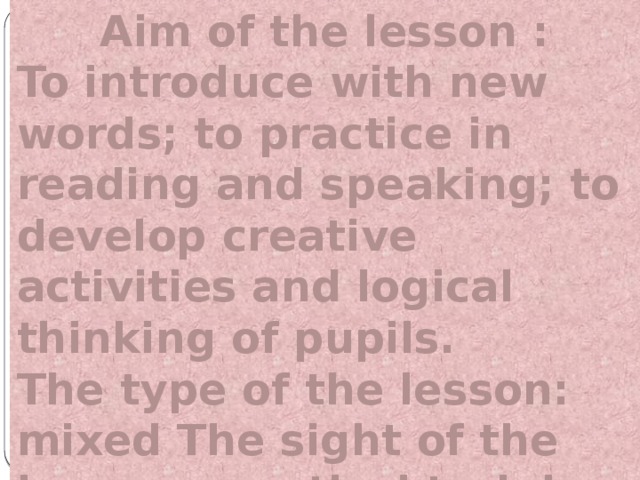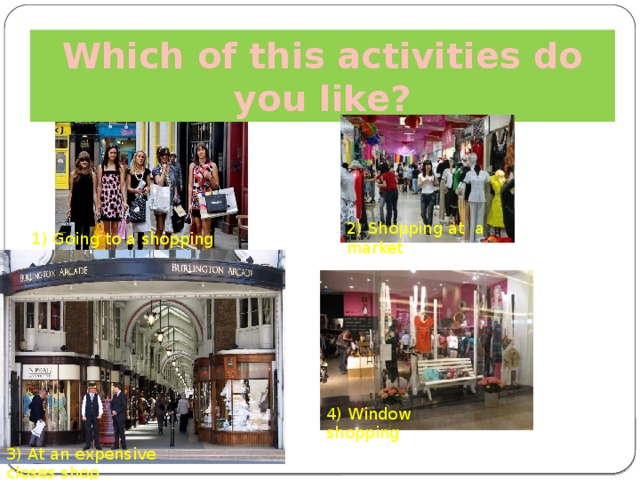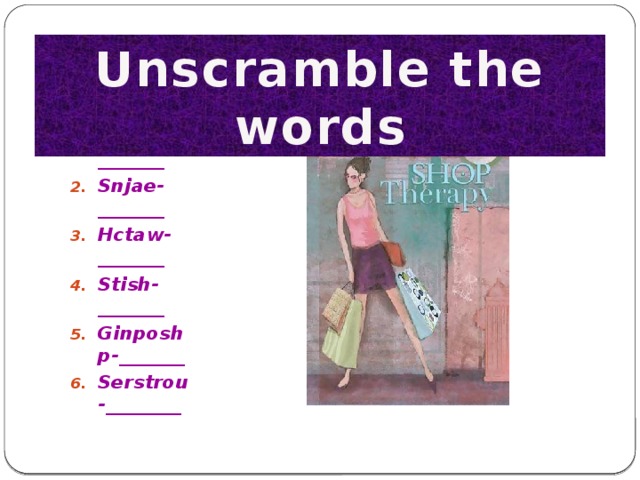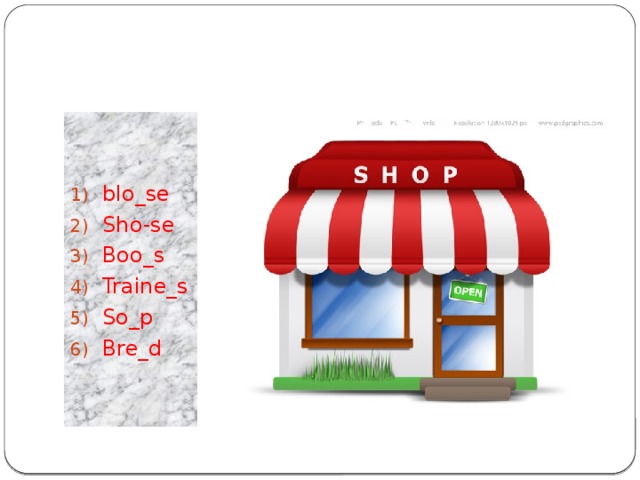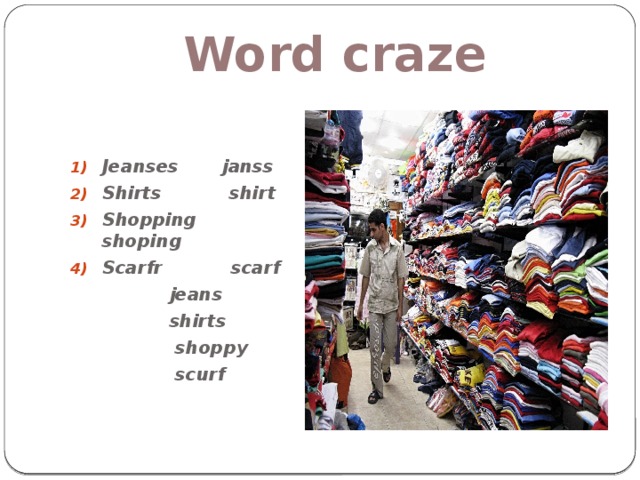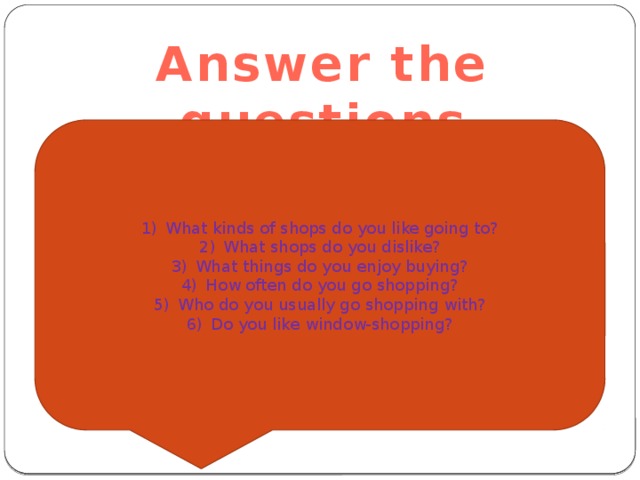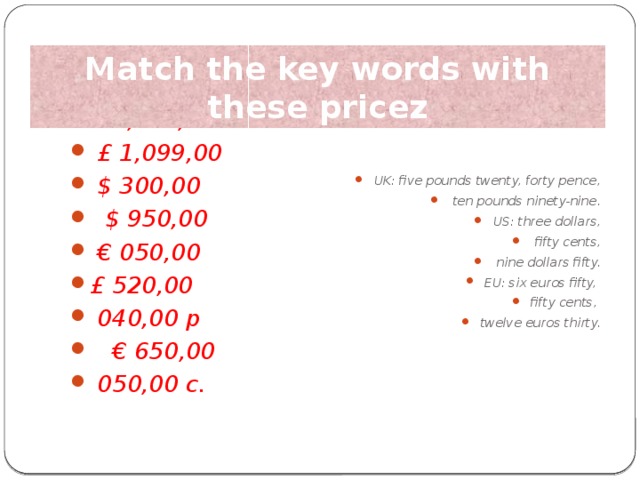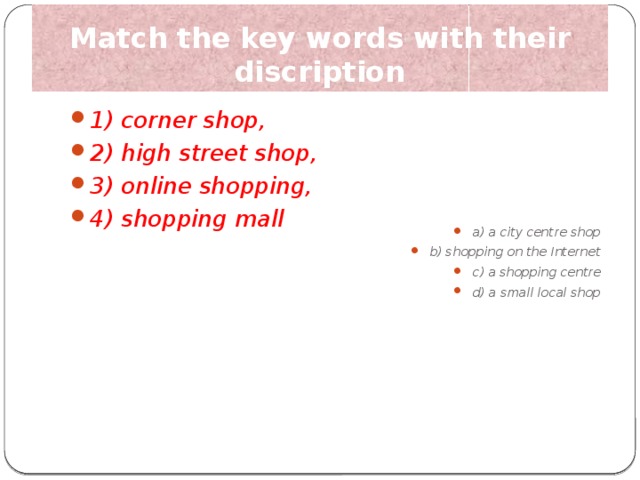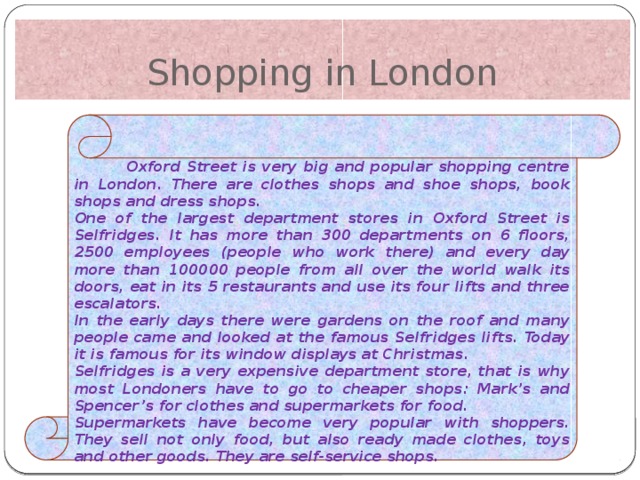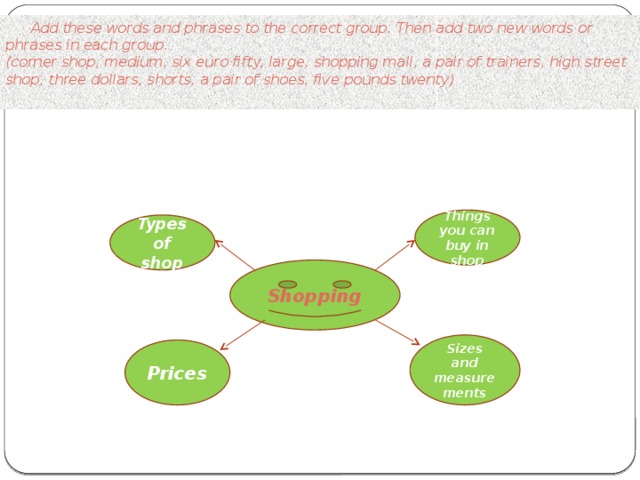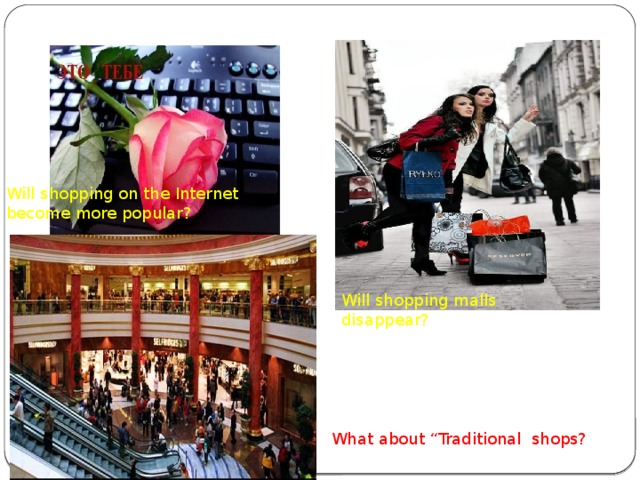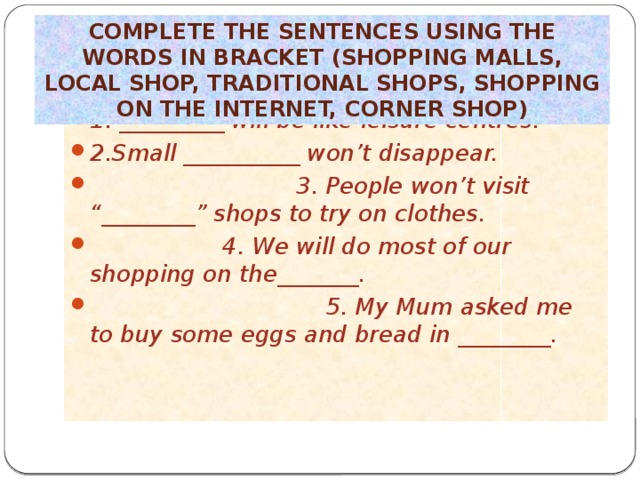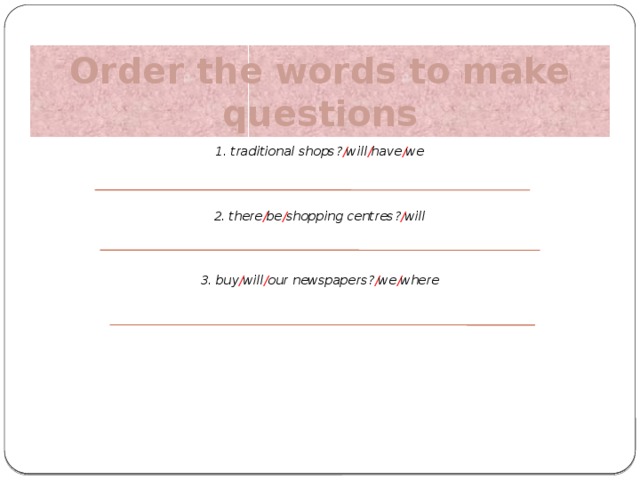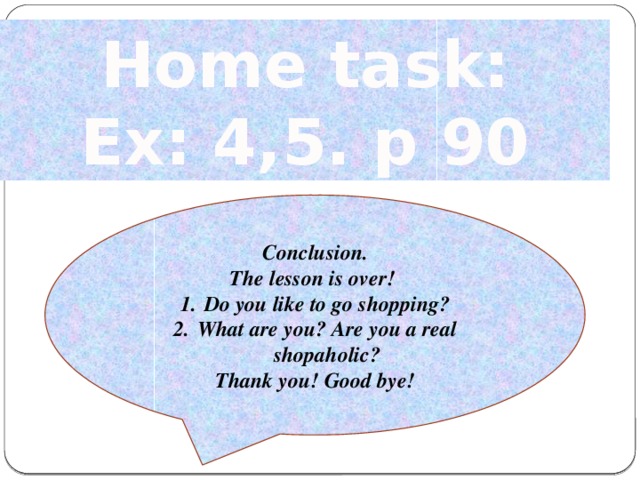Aim of the lesson: a) to introduce new words:
b) to practise in reading;
c) to develop creative activities and logical thinking of students;
Visual aids: book, board, pictures, cards.
The type of the lesson: combined-mixed lesson.
The mode of the lesson: practical lesson.
Plan
1. Organization moment.
2. Check up the hometask.
3. Teacher’s speech.
4. To introduce new words.
5. Warm-up. Look at the photos.
6.Unscramble the words.
7. Which letter is missing?
8. Warm-up. Word craze.
9. Following up. Answering the questions.
10. Match the key words. Ex: 4, 101.
11. Work in pairs. Ex: 2, p 92.
12. Match the key words. Shopping. Ex: 1, 102.
13. Talk to your partner. Dialogues.
14. Reading.
15. True or False statements.
16. Talk to your partner. Future of Shopping.
17. Writing. Ex: 7, p 103.
18. Order the words to make questions.
19. Home task.
20. Conclusion.
Outline of the lesson.
1. Organization moment.
2. Checking up the hometask. Ex: 6, 88.
3. Teacher’s speech.
Shopping is a part of our daily life. And we have to deal with it whether we like it or not. There are people who hate going shopping. So they make a list of what they need and Run through stores buying he necessared things. Sometimes they even don’t care about the prices. And there are people who go from store to store looking for goods of better quality and lower prices. They don’t bother about the time they spend shopping. But there is a very good service called Internet Market. It really helps you to save your time and get goods of high quality. You just have to look though a catalogue, choose the things. You like, order them and wait
a little to get them.
4. To introduce new words.
5.Warming up. Looking at the photos. Which of the activities do you enjoy? Tell the class.
6.Unscramble the words.
7. Which letter is missing?
8. Warm-up. Word craze. One of the spelling is correct, circle the right one.
9. Work in pairs. Asking and answering the questions.
10. Match the key words. Ex: 4, 101. Match the key words with these prices.
11. Work in pairs. Ex: 2, p 92.
2. Where can you buy films for your camera?
We can buy films at the chemists.
3. What can we buy at Boots?
We can buy records, radios, hi-fi.
4. What do they sell at the bakers?
They sell bread and some kinds of sweets.
12. Pre teach. Match the key words. Ex: 1, 102.
13. Talk to your partner. Dialogues.
Dialogue 1.
S.A: Can I help you?
Costumer: Yes, please. Have you got any blue cotton shirts?
S.A: Yes, here you are. This is medium.
Costumer: It’s too small. Where can I try it on?
S.A: Over there.
(5 minutes later)
Costumer: Can I try on the next size?
S.A: Certainly.
Dialogue 2.
Costumer: Excuse me!
S.A: Yes, can I help you?
Costumer: How much are this scarves?
S.A: They are twenty-five pounds.
Costumer: I’m afraid they are too expensive.
S.A: Well these are only twenty pounds.
Costumer: No, they aren’t colourful enough. I want orange or yellow.
14. Vocabulary. Ex: 2, p 76.
Add these words and phrases to the correct group. Then add two new words or phrases in each group.
(corner shop, medium, six euros fifty, large, shopping mall, a pair of trainers, high street shop, three dollars, shorts, a pair of shoes, five pounds twenty)
Cornershop A pair of trainers
shorts
shopping mall
High street shop a pair of shorts
5 p 20
medium
3 $
6,50 large
15. Reading. Ex: 3, p 92. “Shopping in London”.
16. True or False statements. Ex: 4, p 92.
1. Oxford is popular because it’s very big.
2. Only employees eat at its 5 restaurants.
3. Selfridges were as popular as they are.
4. Supermarkets are very popular because Selfridges are expensive departments.
17. Retell the text answering these questions. Ex: 6, 93.
1. Why is Oxford Street very popular?
2. What is Selfridges famous for?
3. What are supermarkets?
18. Writing. Ex: 7, p 103. Complete the sentences with new words in brackets:


